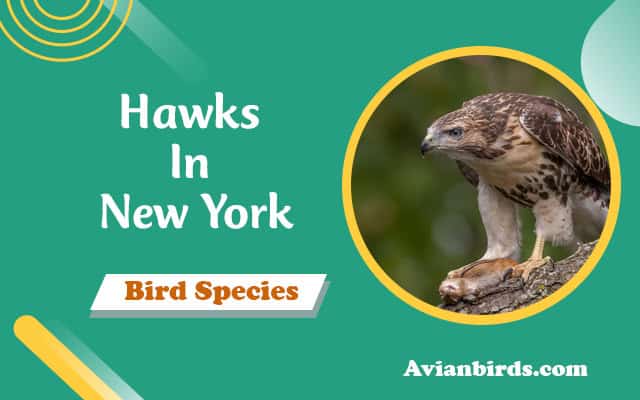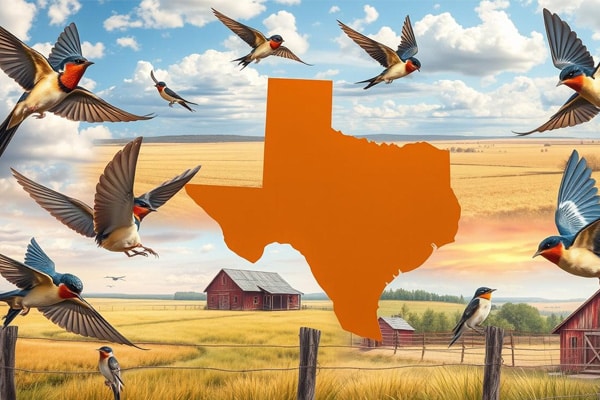8 Amazing Types Of Owls In Florida (ID Guide With Pictures)
Have you ever seen a silent hunter flying at night? If you’ve been to Florida, you might have seen one of its owls. Florida’s different places are perfect for many owl kinds, each with its own special traits and ways.
Florida is home to owls like the Great Horned Owl and the Burrowing Owl. If you’re interested in learning about Florida’s owls, get ready for an exciting journey. We’ll explore the eight owl species that live in Florida.
Owls Of Florida
Florida is home to many owls, each with unique traits and behaviors. From the famous Great Horned Owl to the hidden Burrowing Owl, these birds are key to the state’s ecosystem. Let’s dive into the fascinating owls of Florida.
The Barred Owl lives in Florida year-round, known for its “who-cooks-for-you?” call. It’s a skilled hunter, eating small mammals, birds, and amphibians. They usually lay 2–4 eggs, showing their breeding habits.
The Great Horned Owl is Florida’s largest owl. It’s known for its size and hunting skills, taking down prey like rabbits and skunks. They lay 2 to 3 eggs, showing their care for their young.
The Burrowing Owl lives underground, often in gophers’ burrows. It’s known for its long legs and round head. These owls lay 6–12 eggs, showing their high breeding rate.
1. Great Horned Owl
- Scientific name – Bubo virginianus
- Lifespan – 28 (Recorded)
- Size – 17 to 25 in
- Weight – 2.6 to 3.5 lb
- Wingspan – 3 to 5 ft
In Florida, the Great Horned Owl is a standout among owls. It’s known for its tufted head and sharp look. This bird is big, with a wingspan of up to 60 inches and weighing 32 to 88 ounces. It’s a top hunter, eating rodents, rabbits, birds, and even other birds of prey.

Nesting Habits
Great Horned Owls don’t always build their own nests. They often use nests made by other birds or find natural hollows in trees. They take great care of their eggs, making sure they hatch safely.
The baby owlets are blind and covered in soft feathers at first. They rely on their parents for everything. As they grow, they become strong and independent, showing off their unique feathers.
Life is tough for these owlets, facing challenges like fights with other predators and the risk of not finding enough food. But, they are strong and keep going, thanks to their caring parents.
2. Eastern Screech Owl
- Scientific name – Megascops asio
- Lifespan – 14 years (oldest recorded)
- Size – 6.5 to 10 in
- Weight – 4 to 8 oz
- Wingspan – 18 to 24 in
The eastern screech owl is a small, elusive owl found in urban and suburban Florida. They make their home in cities and towns, thanks to their ability to live among us. Their unique “tremolo” calls fill the evenings, as they hunt for small rodents and insects.

These owls are hard to see, but they play a big role in our ecosystem. They eat thousands of rodents during their breeding season. This helps keep the local wildlife in balance.
Nesting and Breeding Habits
Eastern screech owls start nesting in March and April. Their breeding season is from mid-March to mid-May. They don’t build nests but use natural cavities or old woodpecker holes. Homeowners can also offer them nest boxes, which can attract these owls to their yards.
The male screech owl hunts and brings food to the female and their chicks during nesting. As the chicks grow, the female joins in hunting. They prepare to leave the nest between late April and mid-May. The male is often harder to see as he works to feed his family.
Eastern screech owls are common in Florida but face many dangers. Larger owls, vehicle collisions, and rodenticide poisoning are threats. By providing safe nesting sites and avoiding harmful chemicals, we can help these owls thrive. This way, we can enjoy watching them in our backyards.
3. Northern Saw-Whet Owl
- Scientific name – Aegolius acadicus
- Lifespan – 16 years (captivity)
- Size – 7 to 9 in
- Weight – 2.2 to 5.4 oz
- Wingspan – 17 to 22 in
The northern saw-whet owl is one of the smallest and cutest owls you can find. It has a big, round head and a small, chubby body. Its feathers are mostly brown with little white spots on the top and some blotchy white streaks on the bottom. Its face is a lighter brown, and it has a white Y-shape from its eyebrows to its beak, with its big yellow eyes in the middle.
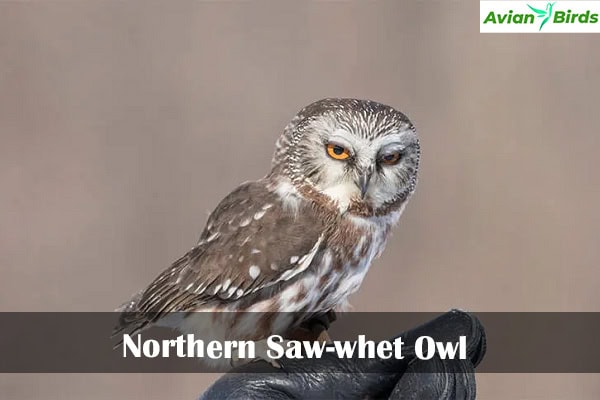
Also, These owls mostly live in forests with coniferous trees, like pine trees. In winter, they can also be found in forests with a mix of different trees. They make their nests in tree holes that woodpeckers have drilled or in old nests made by other birds. In Florida, northern saw-whet owls are rare and can only be found in the northern parts during winter. You can hear their call from far away; it sounds like a whistling, repetitive toot, similar to the sound of a saw being sharpened, which is why they are named “saw-whet.”
Northern saw-whet owls are active at night and have amazing hearing, allowing them to find prey just by listening. Plus, Most of their food is small rodents, but they also eat small birds, bats, frogs, and insects. Even though they are found in many places, the population in the southern Appalachian region is in danger. The biggest problem for these owls is the loss of their homes due to cutting down trees and destroying old forests.
4. Burrowing Owl
- Scientific name – Athene cunicularia
- Lifespan – 9 years
- Size – 7 to 11 in
- Weight – 4.8 to 8.5 oz
- Wingspan – 20 to 24 in
In Florida, the burrowing owl is a standout species. It’s small, with a height of nine inches and a wingspan of 21 inches. These owls live underground, often taking over the burrows of gopher tortoises or armadillos.

Burrowing Owls in Florida
The Florida Fish & Wildlife Commission lists burrowing owls as “Threatened”. This is mainly because their natural homes are disappearing. They lay four to ten eggs in their underground burrows, which can be up to eight feet deep. The burrows are cozy, and filled with grass, animal waste, and other decorations.
After two weeks, the eggs hatch, and the chicks start flying at six weeks. Despite their size, these owls eat a wide variety of food, including grasshoppers, beetles, and small rodents.
There are 22 subspecies of burrowing owls, and they usually live for six to eight years.
Between 1966 and 2013, the burrowing owl population in North America dropped by 33%. This was mainly because of human activities and habitat loss. To help, scientists in Washington State have built artificial burrows using drainpipes.
People used to call these owls the “howdy bird” because of their head-nodding greeting. This shows how these underground owls have captured the hearts of many.
5. Short-eared Owl
- Scientific name – Strix varia
- Lifespan – 24 years (oldest recorded)
- Size – 16 to 25 in
- Weight – 17 to 35 oz
- Wingspan – 38 to 49 in
As winter comes, the Short-eared Owl (Asio flammeus) becomes a sight to see in Florida’s skies. These birds gather in groups of up to 200, making their presence stand out in open grasslands. They are unique because they are active during the day. This lets people watch them fly low over the land.
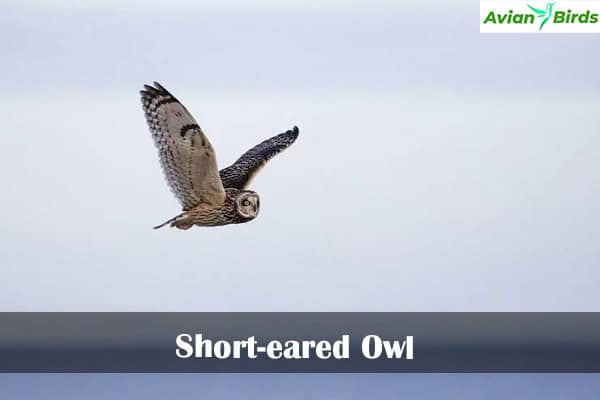
The Short-eared Owl visits Florida in the winter, often because of its favorite food, the vole. When there are lots of voles, these owls stay in one place. But they move around a lot, following where their food is. In Mesilla State Park, one was seen in the winter, bringing joy to those who saw it.
Even though it’s not as famous as the Great Horned Owl or the Snowy Owl, the Short-eared Owl is still loved by many. Its daytime activity and link to voles make it a special part of Florida’s owl world. If you’re out exploring, look for these winter visitors. You might see something truly special.
6. Barred Owl
- Scientific name – Tyto alba
- Lifespan – 2 to 4 years (wild)
- Size – 13 to 15 in
- Weight – 8 to 25 oz
- Wingspan – 31 to 37 in
In Florida’s lush forests, the barred owl shines brightly. It’s famous for its eight-note call, a haunting tune that fills the woods. This owl’s deep hoots announce its presence, often in duets with its mate or to mark its territory.

Vocalizations of the Barred Owl
The barred owl’s call is a wonder of nature. Its eight-noted song, often heard as “Who cooks for you? Who cooks for you-all?”, is well-known. These owls are great at making different sounds to talk to each other. They use soft hoots and loud screeches for mating, defending their territory, and chatting with friends.
Many hunters try to imitate the barred owl’s call. In “turkey calling” and “owl hooting” contests, experts show off their skills. This shows how much people admire the barred owl’s unique voice in Florida’s wild.
The barred owl is not just known for its voice. It’s also very adaptable and strong. These owls live in many types of woods, even in cities, making them familiar to many Floridians. With their sharp senses and sneaky hunting, they help keep the ecosystem balanced by controlling small mammal and prey populations.
7. Snowy Owl (Very Rare)
- Scientific name – Bubo scandiacus
- Lifespan – 10 (average) 23 years (oldest recorded)
- Size – 20 to 28 in
- Weight – 56 to104 oz
- Wingspan – 50 to 57 in
Florida isn’t usually a home for snowy owls, but sometimes they do fly as far south as the Sunshine State. Snowy owls are easy to spot because of their striking white feathers and bright yellow eyes. Even though they are mostly white, their feathers have dark spots on the upper parts. Females have more spots and some brown stripes. Snowy owls have small heads, short ear tufts, and long feathers that help them blend in with the snowy Arctic landscape, making them look like a pile of snow on the ground.

Snowy owls live in the Arctic tundra, which is a flat, treeless area. Also, They build their nests in shallow depressions on the ground, often on high spots like ridges or hills. These owls are known for their unpredictable migration patterns. Some winters, move south and can be found in places like meadows, prairies, grasslands, lake shores, and even fields like those on golf courses or airports.
Snowy owls have a unique call that sounds like a barking noise, unlike other owls that hoot. Their common call is a series of rough “kru kru kru” notes, and they can also make clucking, squealing, grunting, hissing, and cackling sounds.
Unlike many owls, snowy owls hunt both during the day and at night. They don’t have the super-sensitive hearing that other owls do, so they rely more on their sharp eyesight. Also, They usually hunt from a perch and swoop down to catch their prey. Their main food is small mammals, especially lemmings, but they also eat other rodents, birds, and occasionally fish, frogs, or insects.
Seasonal Owl Visitors and Migrants
Florida is known for its diverse owl population, both year-round and seasonal. These owls bring a unique variety to the state’s bird life. They give birdwatchers and nature lovers a chance to see many owl species all year.
Migratory Owls in Florida
The Short-eared Owl and the Long-eared Owl are common migrants in Florida. They come in during winter from their summer homes. The Short-eared Owl is often seen in open areas like grasslands and marshes.
Sometimes, the Snowy Owl visits Florida too, but it’s not often. This is because their numbers can change, leading to more sightings in some years. In the last ten years, only one Snowy Owl was spotted in Florida, showing how rare they are.
The coming of these owls makes Florida’s bird life more diverse. It also gives birdwatchers a chance to see these amazing birds in their natural setting. Florida’s role as a key spot for bird migration shows how rich its ecosystems are.
Owls Found in Other Different Regions
8. Barn Owl
- Scientific name – Tyto alba
- Lifespan – 2 to 4 years (wild)
- Size – 13 to 15 in
- Weight – 8 to 25 oz
- Wingspan – 31 to 37 in
The barn owl (Tyto alba) soars silently through the night, captivating many with its mystery. It’s the most common owl worldwide, found in many places from farmlands to cities. This makes them a common sight for many people.
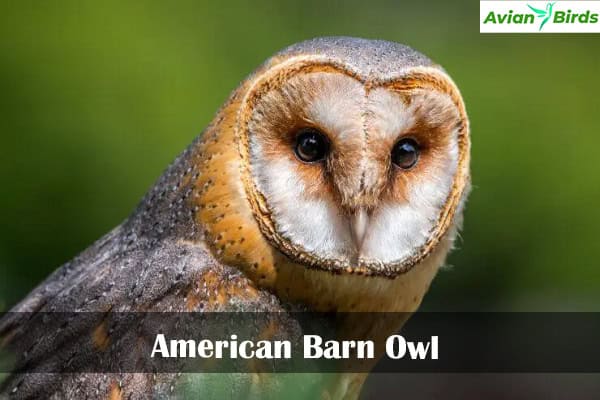
A Nocturnal Prowler
Barn owls stand out with their heart-shaped facial discs and pale look. Their silent flight and large wings make them expert night hunters. They can catch small mammals like voles and mice with ease.
In the United States, barn owls are quite common. Some travel over 1,094 miles from where they were born. They help farmers by controlling pests and keeping small mammal populations in check.
Final Thoughts
Florida is a great place for owl lovers, with many different owl species living here. You can find everything from the famous Great Horned Owl to the rare Burrowing Owl. Each owl plays a key role in keeping Florida’s nature in balance.
These night birds are very interesting because of their special traits and habits. You might see a Barn Owl flying quietly or hear a Barred Owl’s unique call. There’s always more to learn about Florida’s owls.
We can help owls in Florida by supporting conservation and spreading the word about them. By doing this, we can make sure these amazing birds stay around for a long time. So, always be on the lookout, and you might see an owl flying in the Florida sky.


